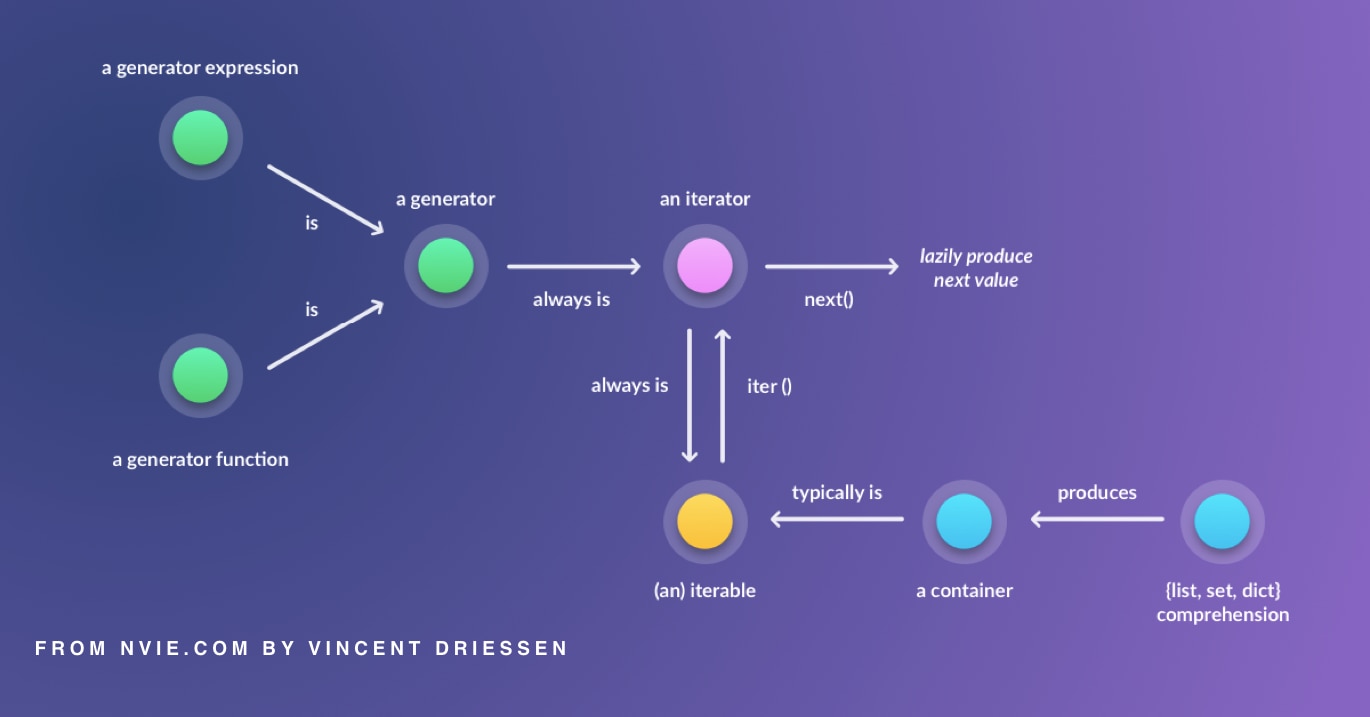Print('first item') yield 10 print('second item') yield 20 print('last item') yield 30. Yield i gen = num_generator() print(values obtained from generator function are:) for element in gen: # a simple generator function def my_gen(): N = 1 print('this is printed first') # generator function contains yield statements yield n n += 1 print('this is printed second') yield n n += 1 print('this is printed at last') yield n # using for loop for item in my_gen(): Instead of generating a list, in python 3, you could splat the generator expression into a print statement.
>>> name = input('enter your name:
Generators with iterators def generator_thr_iter(): Print('first item') yield 10 print('second item') yield 20 print('last item') yield 30. Instead of generating a list, in python 3, you could splat the generator expression into a print statement. It accepts data from the standard input stream, which is usually the keyboard: >>> name = input('enter your name: Let us create a generator that prints the first 50 natural numbers. We use the keyword def and a yield statement to create a generator. Generator functions return a generator object. Example of creating a generator in python Yield 'xyz' yield 246 yield 40.50 for i in generator_thr_iter(): Generator objects are used either by calling the next method on the generator object or using the generator object in a “for in” loop (as shown in the above program). N = 1 print('this is printed first') # generator function contains yield statements yield n n += 1 print('this is printed second') yield n n += 1 print('this is printed at last') yield n # using for loop for item in my_gen(): This prints the elements without commas and without brackets at the beginning and end.
We use the keyword def and a yield statement to create a generator. It is generating a list (and then printing it in an interactive shell). It accepts data from the standard input stream, which is usually the keyboard: # a simple generator function def my_gen(): Creating a generator is similar to creating a function.
It accepts data from the standard input stream, which is usually the keyboard:
The function always returns a string, so you might need to parse it accordingly: Instead of generating a list, in python 3, you could splat the generator expression into a print statement. 1 2 3 4 … In a generator function, a yield statement is used rather than a return statement. >>> name = input('enter your name: We use the keyword def and a yield statement to create a generator. Values obtained from generator function are: Generators with iterators def generator_thr_iter(): Creating a generator in python. Example of creating a generator in python Defined with the def keyword; It accepts data from the standard input stream, which is usually the keyboard: 30/04/2019 · generally generators in python:
Generator functions return a generator object. Generators with iterators def generator_thr_iter(): Print(i) output xyz 246 40.5 generator using next Values obtained from generator function are: Generator objects are used either by calling the next method on the generator object or using the generator object in a “for in” loop (as shown in the above program).
Generator functions return a generator object.
Creating a generator is similar to creating a function. Yield i gen = num_generator() print(values obtained from generator function are:) for element in gen: Generator functions return a generator object. The following is a simple generator function. Generator objects are used either by calling the next method on the generator object or using the generator object in a “for in” loop (as shown in the above program). It is generating a list (and then printing it in an interactive shell). Yield 'xyz' yield 246 yield 40.50 for i in generator_thr_iter(): Instead of generating a list, in python 3, you could splat the generator expression into a print statement. For i in range(1, 11): N = 1 print('this is printed first') # generator function contains yield statements yield n n += 1 print('this is printed second') yield n n += 1 print('this is printed at last') yield n # using for loop for item in my_gen(): 1 2 3 4 … Values obtained from generator function are: Print('first item') yield 10 print('second item') yield 20 print('last item') yield 30.
17+ Generator In Python Print Background. Yield i gen = num_generator() print(values obtained from generator function are:) for element in gen: Generator functions return a generator object. Instead of generating a list, in python 3, you could splat the generator expression into a print statement. The following is a simple generator function. Values obtained from generator function are:

